We all know that social media is an important part of an effective traffic growth strategy for a food blog.
It helps you increase your reach to grow your audience, it’s where a lot of people spend time every day online, and it can help catch the attention of brands or other potential partnerships.
But your time as a blogger, content creator, photographer, and business owner is precious. How do you know you’re getting the most bang for your buck out of your social media efforts?
That’s what we’re covering today! We’re going to talk about the best social media platforms for your goals, how to optimize your posts for each platform, and so much more.
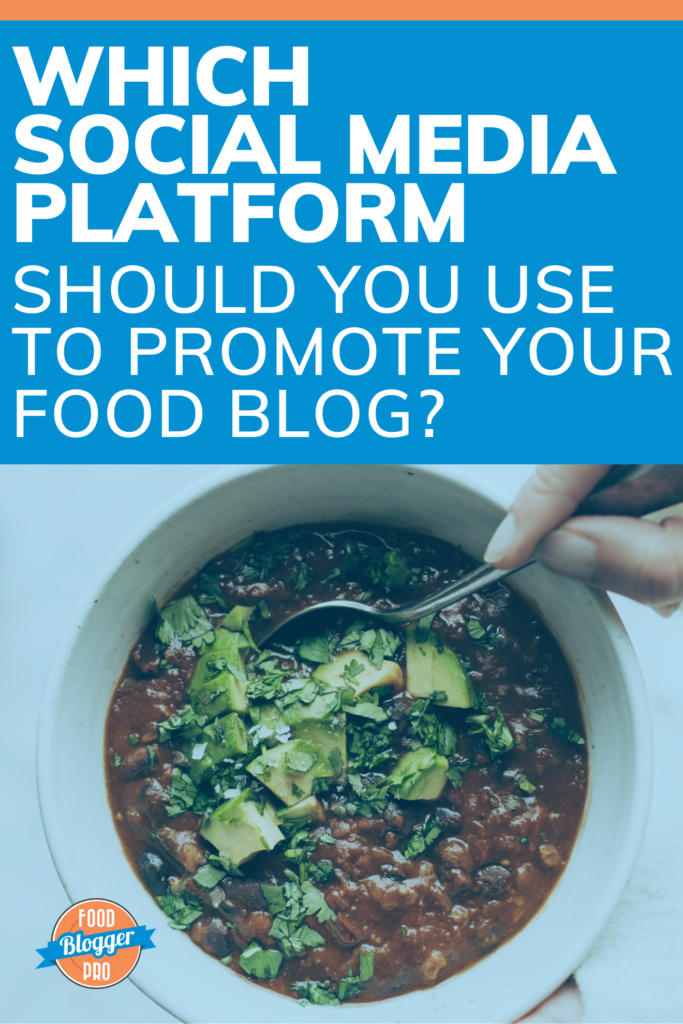
We’re going to cover:
Ready to dive in? Let’s do it!
Instagram for Food Bloggers
Instagram was launched in 2010, and it now has 2 billion users. It’s used to share photos and videos in different forms –– in a curated feed of your favorite accounts, in short-form videos called Stories, and in longer-form videos you can share Live or via Reels.
Instagram’s users are mostly younger — that means that if your blog following typically skews younger, Instagram might be a great place to meet your audience—both current and potential—at a place where they’re already spending their time.
With a cohesive feed of branded photos, Instagram can give your followers a unique snapshot of your aesthetic:
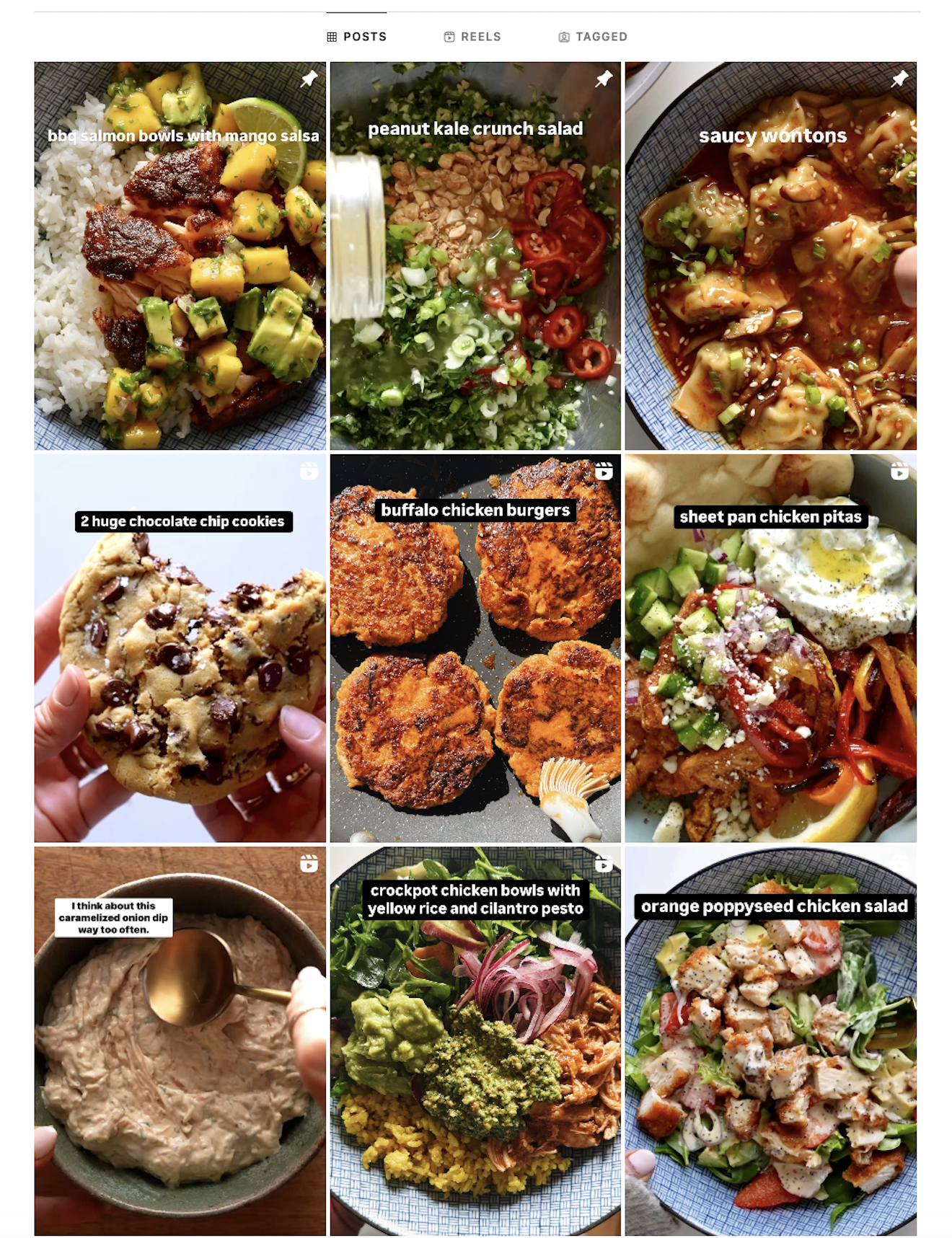
That said, it’s tough to drive traffic back to your site through Instagram, as you don’t have the ability to attach clickable links to your feed photos and videos. You can add links to your Stories, but you have to reach 10,000 followers to have that feature.
Even so, Instagram is an important platform for building your brand and engaging with your audience. Instagram is also a popular platform for sponsored posts, especially if you have an engaging audience.
Instagram at a Glance:
It’s best for:
- Building brand awareness
- Connecting with brands/sponsors
- Working on sponsored campaigns
Advantages:
- A curated feed of similar-looking photos helps build a solid brand
- You’ll have reach to a younger audience
- Instagram is a great platform where you can connect with brands
Disadvantages:
- Instagram isn’t a big traffic-driver (but you can use tools like linkin.bio and linkinprofile.com to send people to your site)
- The algorithm makes getting seen a bit more difficult
- The number of features and ways you can share content can be overwhelming
Example of awesome Instagram content:
Here’s an engaging “hands and pans” video from Pinch of Yum. It uses hashtags, give people a chance to find the recipe on their site, and features a fun description.
Wondering what size your videos should be?Pinterest for Food Bloggers
We’re huge fans of Pinterest –– with its cool 498 million monthly users, Pinterest is a fantastic way to get eyes on your content.
While it started as a way for people to save and share inspirational images, Pinterest has quickly become one of the go-to places to find recipes. In fact, 52% of Pinners use Pinterest to find food and drink ideas, so many food bloggers use Pinterest as a major traffic driver in their growth strategies.
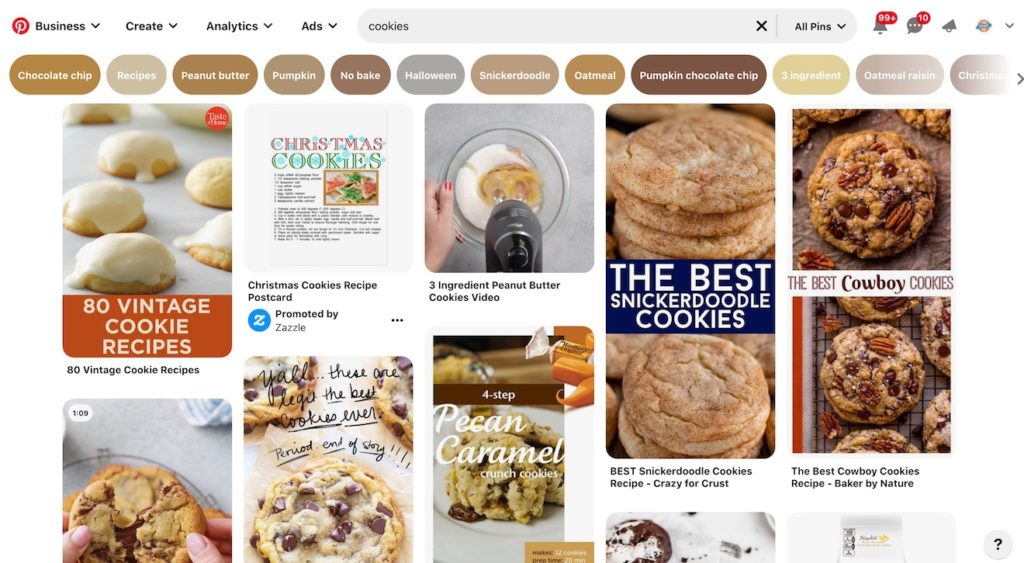
Pins (i.e. the pieces of content that people save and share) can come in a few different forms, like images, videos, stories, so be sure to experiment with the kind of content you share (here are some tips from Pinterest themselves). Pinterest also recommends pinning fresh content (aka. new pins) because users love seeing different kinds of content and it’s favored by the Pinterest algorithm.
It’s also pretty simple to encourage your readers to pin the content in your posts (like inside the recipe card or within the post itself) so that they share your content for you.
Pinterest at a Glance:
It’s best for:
- Driving traffic back to your website
- Expanding audience reach
Advantages:
- Pinterest is notoriously a high traffic driver
- Pins also have high click-through rates
Disadvantages:
- It takes time to continually post fresh content, and it can be difficult to pin when you don’t have a lot of content
- The algorithm changes regularly
Example of awesome Pinterest content:
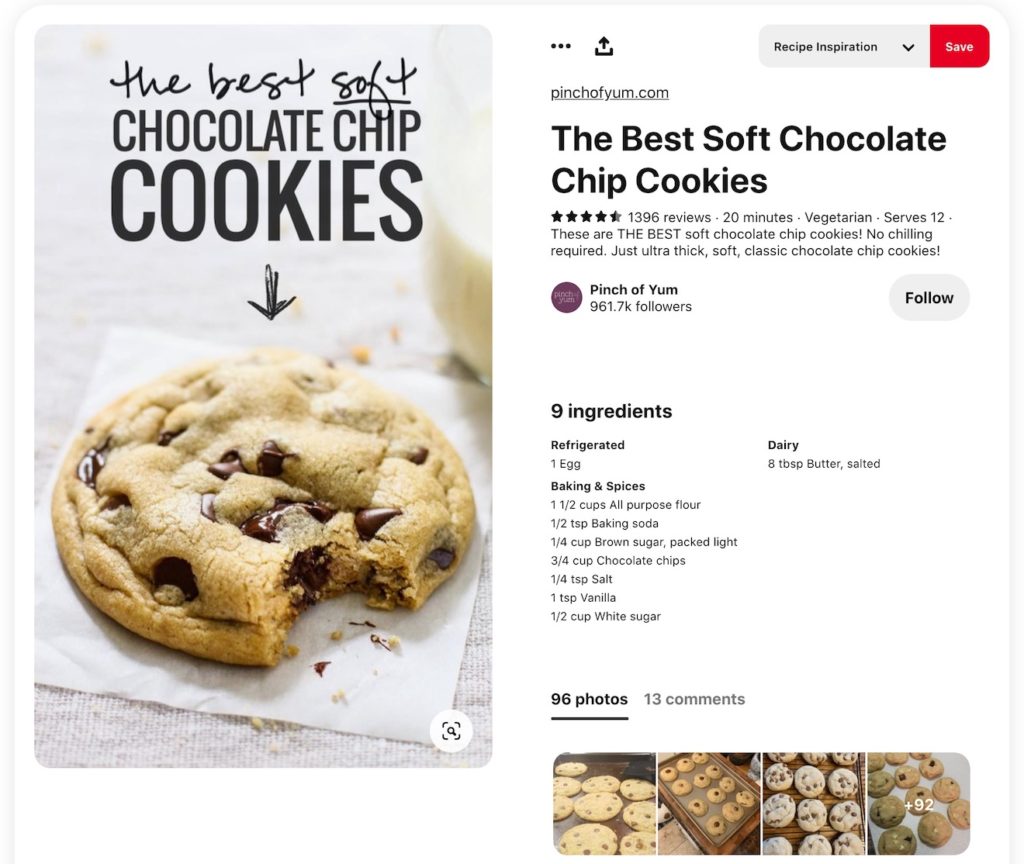
This pin is awesome for a few different reasons.
First, it utilizes Rich Pins to show Pinners a bit more information about the recipe like ingredients, number of reviews, and description.
And second, the image has large, eye-catching text that tells each Pinner exactly what they’re going to find by clicking on that image.
You can see that nearly 100 Pinners have uploaded their own pictures of their cookies to this pin, which is a great testament to the recipe and the health of the pin.
Wondering how to make high-performing photos for Pinterest?Facebook for Food Bloggers
With 3 billion users, food bloggers can find a lot of audience-building potential on Facebook.
Food bloggers typically have standalone Pages for their blog where they share posts, photos, videos, and/or memes, but we’ve also seen some food bloggers find success with private or public Groups for their most loyal fans (more on that in a bit).
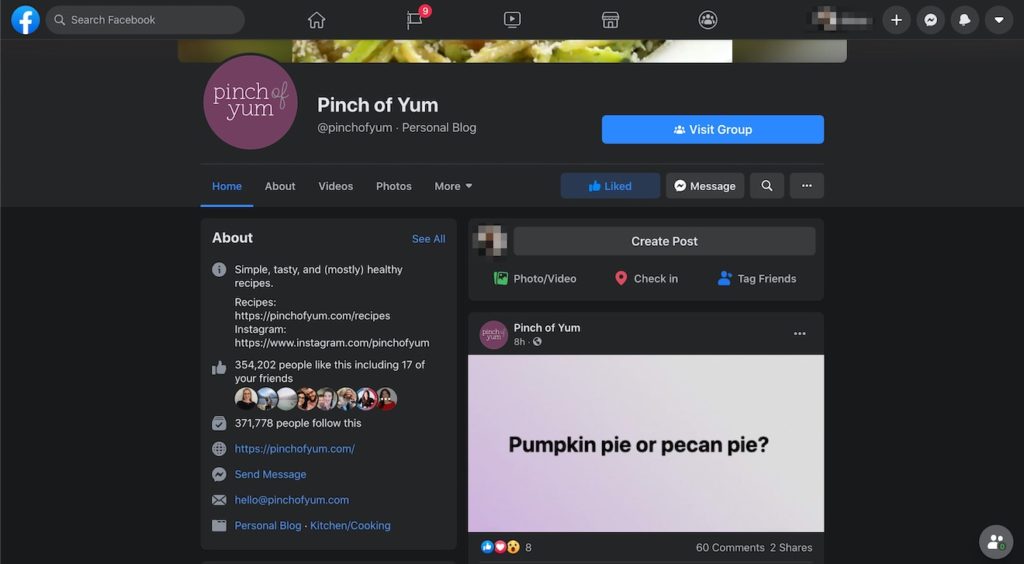
Facebook users are typically older, and the fastest-growing audience on Facebook is actually in the 65+ range. If your blog and recipes appeal to an older audience, you might want to spend some time building out a Facebook strategy for your brand.
That said, Facebook can make it hard for you to get your contact organically in front of others because their algorithm can be restrictive unless you have a large audience. This algorithm can make it difficult to generate engagement on your posts and grow your Facebook audience as well.
This is why Facebook Groups have been so popular with food bloggers recently; fans and followers are much more likely to engage with the content you post in a Group because they’ve opted in to receiving that content. Here’s an example of Sally’s Baking Addiction’s Baking Lovers Group:
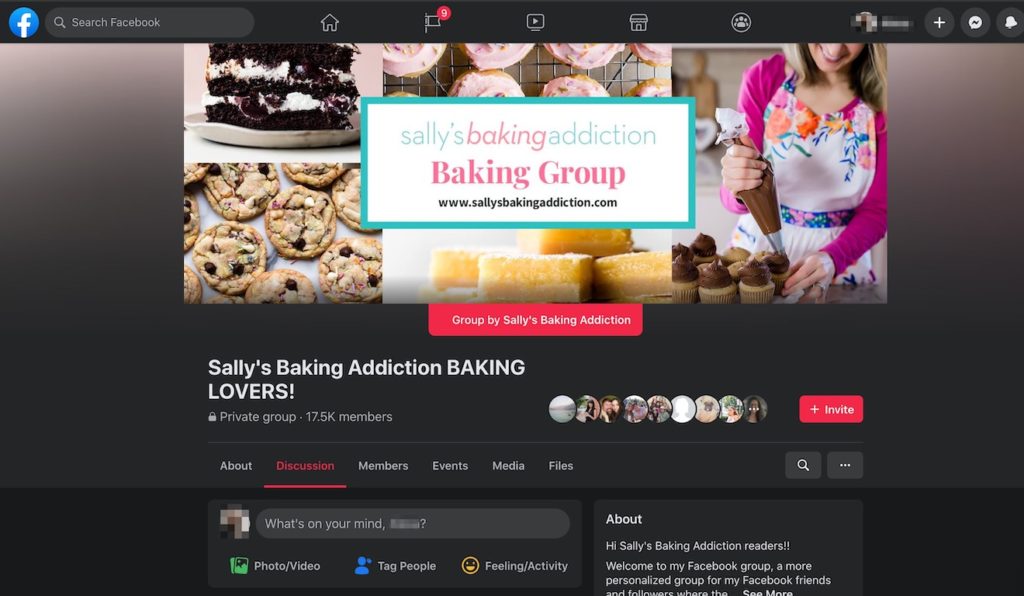
Facebook at a Glance:
It’s best for:
- Driving traffic back to your website
Advantages:
- Facebook posts can have high click-through rates
- It has a large audience base
- It’s easy to use
Disadvantages:
- It’s hard to grow and gain engagement there due to the algorithm
- Facebook needs to be constantly “fed” with new content if you want your audience to grow
Example of awesome Facebook content:
Here’s an engaging video on the Pinch of Yum Facebook Page. It has a link back to the recipe, it’s in a playlist where followers can go to find similar recipes, and it has helpful information about the recipe like calories, protein amount, and notes about the ingredients.
TikTok for Food Bloggers
This social media platform is the newest on our list, but it already has over 800 million users, primarily in the 18- to 24-years-old range.
TikTok is purely for short, snappy, fun videos that are quick, entertaining, and easy to watch. Many TikTok videos are comedic, trendy, and viral in nature, but it can also be used for recipe videos if shot in a fun, quick, and interesting way.
While TikTok can be used for driving some traffic back to your site, it’s most effectively used as a way to gain brand awareness and to build an audience.
TikTok at a Glance:
It’s best for:
- Building an audience
- Reaching a younger audience
- Showcasing your personality
Advantages:
- It’s an easy tool to use to make recipe videos
- There aren’t a ton of food bloggers on TikTok just yet, so you can potentially have a “first mover” advantage
Disadvantages:
- You need to create videos within the app
- Food videos don’t typically go viral unless they’re created in a unique way
Example of awesome TikTok content:
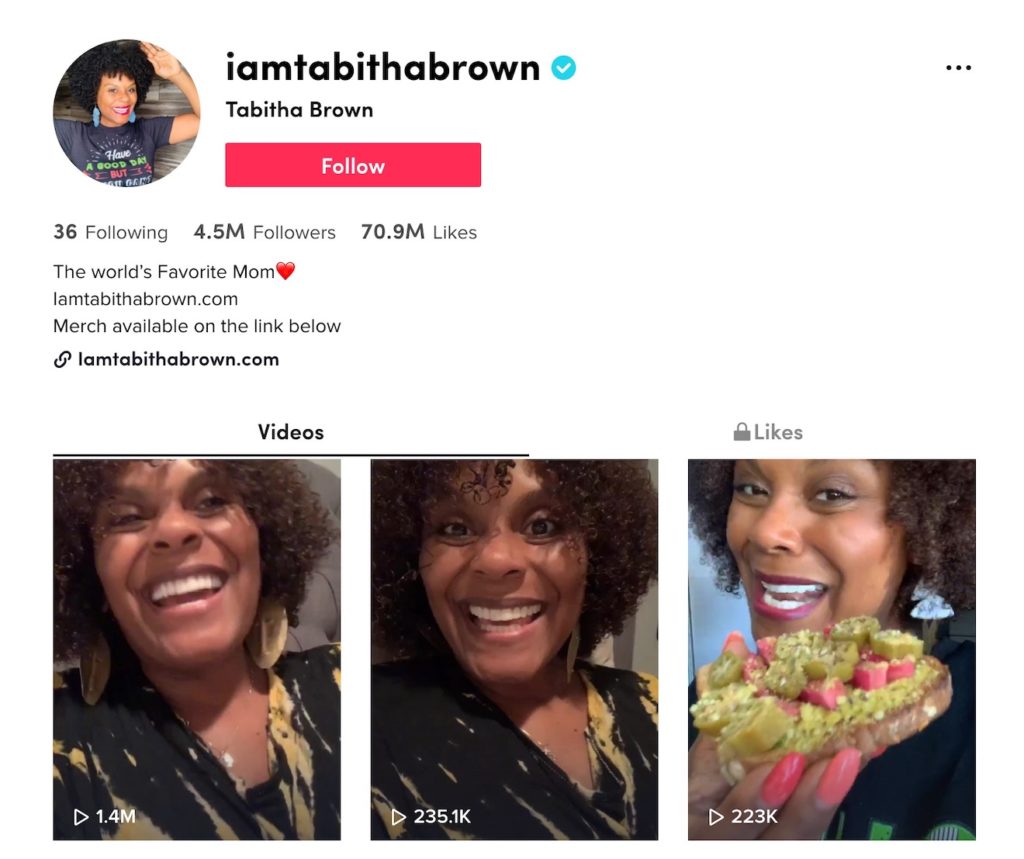
Tabitha Brown is the unofficial Queen of TikTok. She’s probably best known for her carrot bacon recipe video, but her whole catalog of videos are engaging, fun, and shareable.
YouTube for Food Bloggers
YouTube has 2 billion (that’s with a B!) users, and it’s a video-sharing platform owned and operated by Google.
While short and snappy “hands and pans”-style videos perform best on platforms like Instagram and Facebook, longer-form videos that are 20 minutes or longer thrive on YouTube. Because of that, YouTube is a great place to show off your on-camera personality as well as your cooking skills.
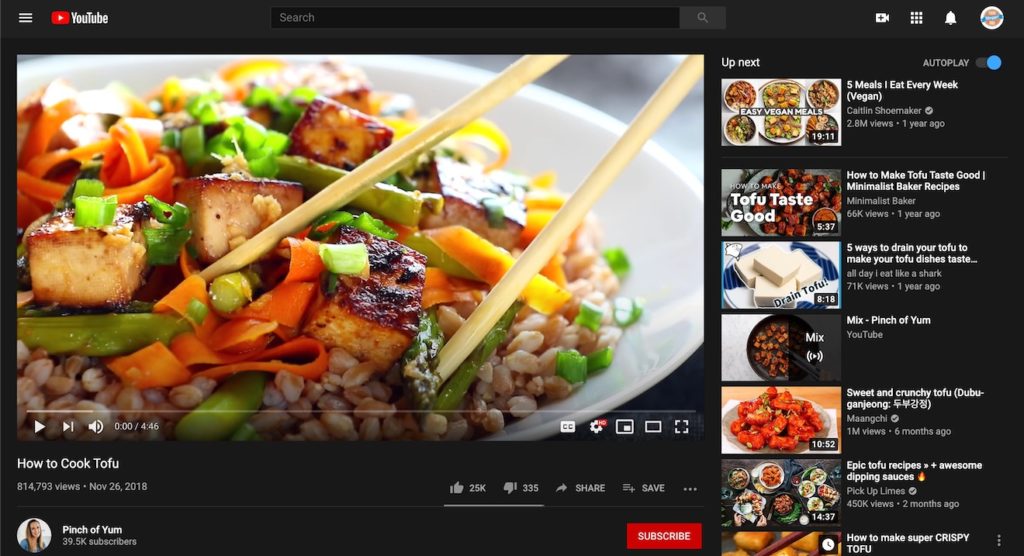
It’s estimated that 90% of 18–24 year olds and 93% of 25–30 year olds use YouTube, so it’s a great place to be publishing content if your audience is on the younger side. You can also spend a lot of your time on YouTube if you’re interested in going all-in on video; you could have YouTube as your primary platform and use your blog as the backup to host your recipes.
YouTube at a Glance:
It’s best for:
- Building an audience
- Leveraging your audience into sponsorships and/or ad revenue
- Showing off your personality and building a relationship with your audience
Advantages:
- It gives you a chance to dive deeper into video and provide more information for your audience
- It’s a venue for longer content like vlogs, travel, and hosted recipe videos
- It’s a great place to be if your audience is young
Disadvantages:
- Videos typically require a higher production value
- You need to join the YouTube Partner Program to monetize your channel with ads, which requires a minimum view and follower count
Example of awesome YouTube content:
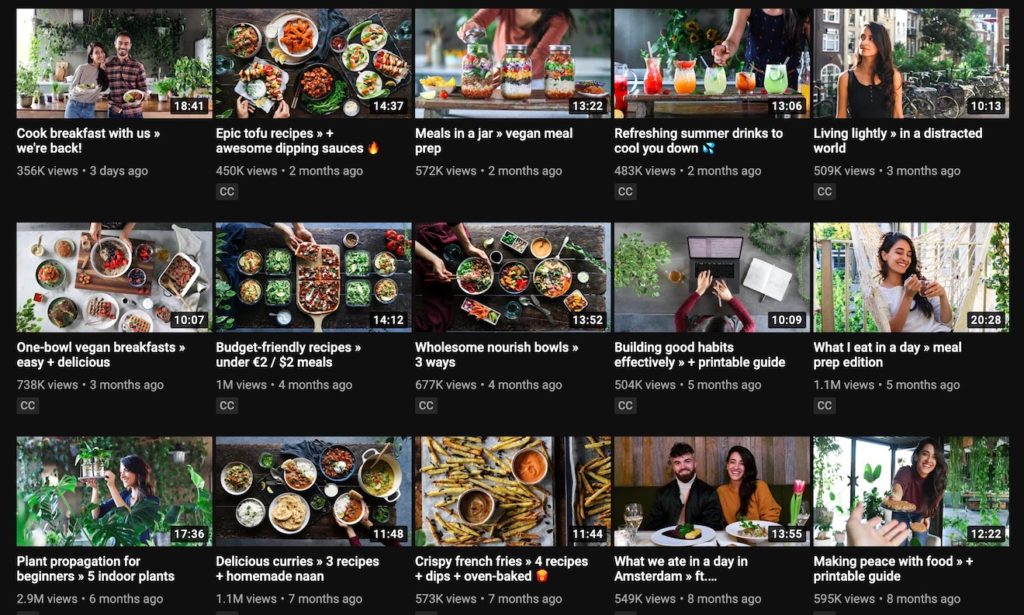
Sadia from Pick Up Limes is an incredibly talented dietician and YouTuber. She creates high-quality hosted recipe videos that have a distinct style, and she has grown her follower count to over 3 million in just four years.
Sadia has a warm, gentle, welcoming personality, and she helps make cooking accessible for her audience. Not only that, but she typically includes multiple recipes in each video, making them longer, more engaging, and interesting.
Do you make recipe videos?Twitter for Food Bloggers
Twitter has 330 million users, with the majority being men.
Tweets (aka. the posts users publish) must be 280 characters or less, so it’s a good place to promote your content with short, engaging descriptions. You can also post photos and/or videos alongside your Tweet to make them even more appealing for likes or retweets.
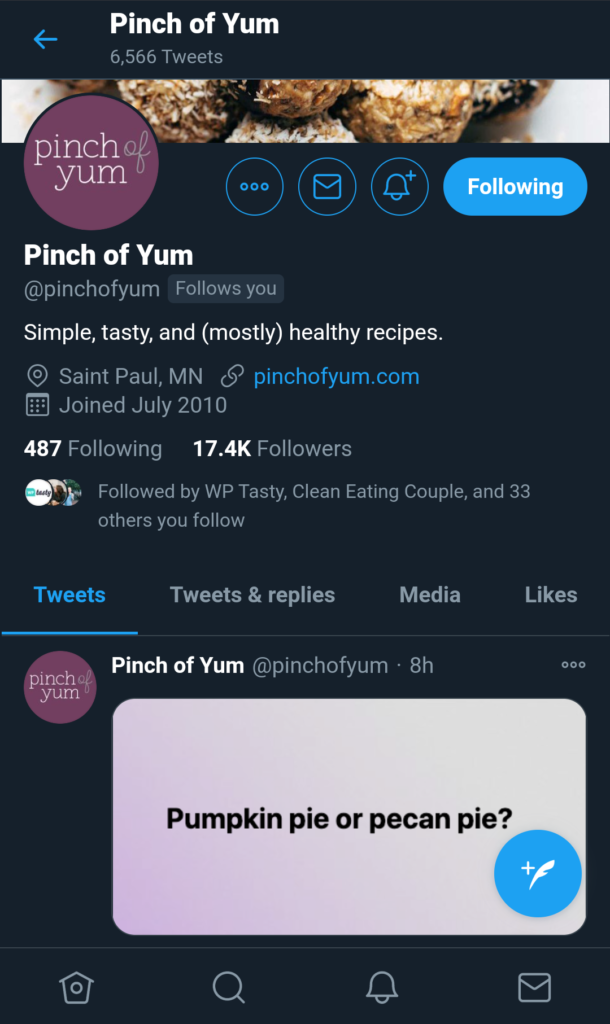
Twitter typically isn’t used to generate a lot of traffic (unless a post goes viral), and it has fallen to the wayside for a lot of bloggers since most people use Twitter for things like politics, comedy, or news. That said, if you have a short and sweet update you want to share with your audience, Twitter might be for you!
Twitter at a Glance:
It’s best for:
- Building a personal brand
- Reaching your audience with short, succinct updates
Advantages:
- It’s not oversaturated with bloggers since most have shifted focus to Instagram and Facebook
- Twitter makes it easy to push content out to to reach another audience
Disadvantages:
- Most people aren’t actively looking for recipes on Twitter
- Recipe posts potentially have a lower chance for engagement
Example of awesome Twitter content:
These salmon burgers are THE YUMMIEST! 👅 Made with just five ingredients. The best for a quick + easy high protein lunch or dinner. 🙌 https://t.co/ck2mkbGctB pic.twitter.com/hqUIVdoAMC
— Pinch of Yum (@pinchofyum) January 27, 2020
A quick, snappy description, emojis, and an eye-catching photo are what make this Pinch of Yum post engaging on Twitter.
LinkedIn for Food Bloggers
There are 500 million users on LinkedIn, and at first glance, it may seem like food bloggers would have no reason to be promoting their content there.
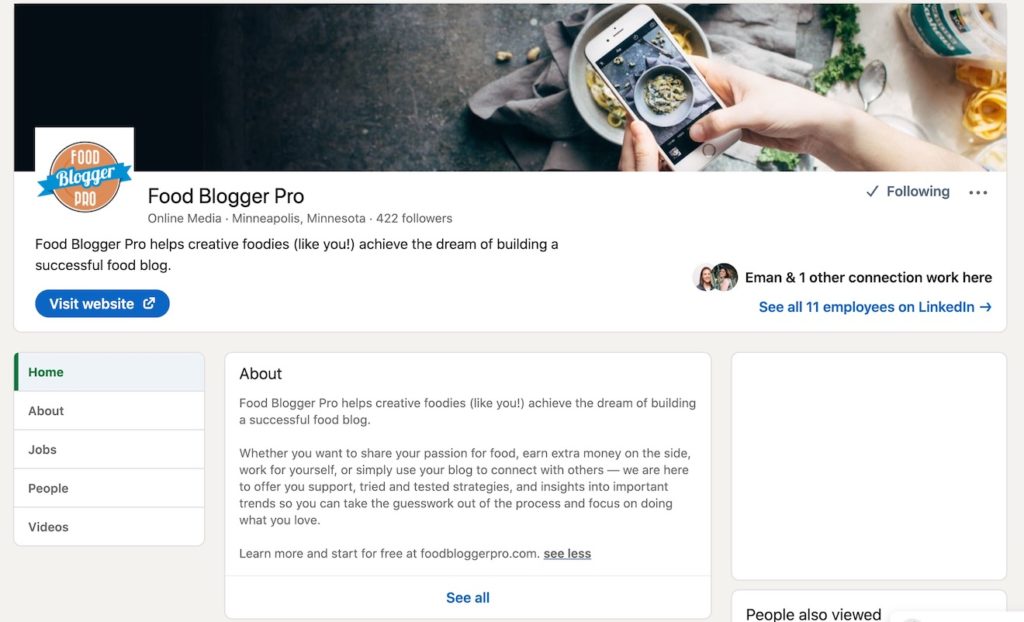
That said, if you have a professional niche, podcast, or product that can help LinkedIn’s audience (who is typically focused on networking and career advancement), there might be some merit to spending some time promoting your content there.
LinkedIn at a Glance:
It’s best for:
- Promoting educational content or workshops, podcasts, or anything career-focused
Advantages:
- LinkedIn users are unique in that they’re all more or less interested in business, professional development, and networking; this could pose an advantage for a food blogger with the right kind of content to promote
Disadvantages:
- Users aren’t likely to engage with food content
Example of awesome LinkedIn content:
We post on LinkedIn for our podcast, The Food Blogger Pro Podcast, as well as when we publish blog posts (like this one!) to help us reach entrepreneurs, bloggers, and creators.
So now what?
Now that you know a bit about how you can use each social media platform as a food blogger, it may seem like you need to be giving each one your all.
Luckily, that’s not the case at all!
We recommend picking and choosing where you spend your time promoting your content on the social media platforms that help you reach your goals and your desired audience. Try starting out with 2–3 platforms that align with your traffic and brand goals, and expand if and when you have the time, means, and business case to do so.
For example, if your audience is typically older, it doesn’t make much sense to spend time promoting your brand on a platform like TikTok where the majority of users are younger.
Now we’re curious:
- What are your social media goals?
- On which platform do you think you’ll spend your time?
- What other questions do you have about sharing your food blog content on social media?
Thanks – this was really useful. I like the way your broke out the numbers and demographics, it helps form a kind of personality for each platform and where you should post depending on your goals.
We’re so glad you enjoyed the post, Adam! 🙂